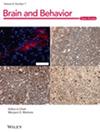The Soluble Platelet-Derived Growth Factor β Receptor Induces Postoperative Delirium by Downregulating the Clearance of β-Amyloid in the Brain
Abstract
Purpose:
To investigate the relationship between soluble platelet-derived growth factor β receptor (sPDGFRβ) in cerebrospinal fluid (CSF) and Alzheimer's disease (AD) biomarkers, to determine whether high CSF sPDGGFRβ is a potential risk factor for postoperative delirium (POD), and to evaluate its predictive effect, so as to provide reference for clinical prevention and treatment.
Patients and Methods:
CSF samples were collected preoperatively from cognitively normal participants aged 50–90 years undergoing knee/hip replacement surgery under spinal-epidural anesthesia. The concentrations of sPDGFRβ, β-amyloid 42 (Aβ42), total tau protein (Ttau), and phosphorylated tau protein (Ptau) in CSF were detected by enzyme-linked immunosorbent assay (ELISA). The confusion assessment method (CAM) was used to evaluate whether participants developed POD after surgery, and they were divided into the POD group and non-POD group (NPOD). The relationship between CSF sPDGFRβ, AD biomarkers, and POD was analyzed.
Results:
The level of sPDGFRβ, a marker of brain pericyte injury, was significantly increased in POD patients (p < 0.05), and the difference was still statistically significant after adjusting for multiple confounders (p < 0.05). CSF Aβ42 showed a significant mediating effect between CSF sPDGFRβ level and POD (22.45%). The combination of AD biomarkers and CSF sPDGFRβ predicted POD better than that of AD biomarkers or CSF sPDGFRβ alone.
Conclusion:
The results suggest that the increase in CSF sPDGFRβ is associated with an increased risk of POD due to the blood–brain barrier (BBB) dysfunction and reduced Aβ42 clearance. In this study, the correlation between CSF sPDGFRβ and POD was investigated for the first time, providing a new reference index for POD prediction. However, this paper did not study other relevant indicators of the BBB and lacked follow-up, which could be further improved in the future.


 求助内容:
求助内容: 应助结果提醒方式:
应助结果提醒方式:


